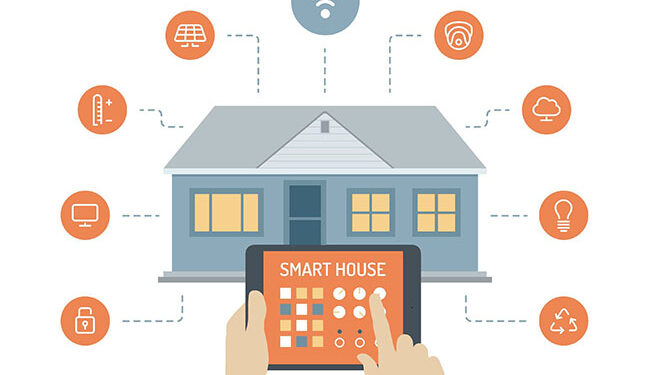Delving into the realm of advanced tools for smart home installation opens up a world of possibilities. From enhancing efficiency to simplifying the installation process, these tools play a crucial role in shaping the smart home landscape. Let's explore the top tools, integration methods, benefits, and emerging trends in this dynamic field.
Types of advanced tools for smart home installation
Advanced tools play a crucial role in simplifying the installation process of smart home devices. Here are the top 5 advanced tools used in smart home installations:
1. Cable Tester
A cable tester is essential for ensuring that the wiring connections are correct and functioning properly. It helps in identifying any faults or issues in the cables, ensuring a seamless installation process. This tool saves time by quickly pinpointing any wiring problems before they become major issues.
2. Multimeter
A multimeter is used to measure voltage, current, and resistance in electrical circuits. It allows installers to troubleshoot and verify the electrical connections in smart home devices, ensuring they are properly installed and functioning correctly. The multimeter provides accurate readings, making it an indispensable tool for smart home installations.
3. Wire Strippers
Wire strippers are used to remove the insulation from electrical wires without damaging the conductors. They are essential for preparing wires for installation, ensuring a secure connection between devices. Wire strippers make the installation process efficient and help prevent any damage to the wires during setup.
4. Power Drill
A power drill is used for drilling holes for mounting smart home devices, such as cameras, sensors, or smart locks. It speeds up the installation process by quickly creating holes in walls or surfaces for device placement. The power drill ensures a secure and precise installation of smart home devices.
5. Fish Tape
Fish tape is a tool used to route cables through walls, conduits, or other hard-to-reach spaces during installation. It simplifies the process of running wires from one location to another without causing damage to walls or ceilings. Fish tape saves time and effort in setting up smart home devices in different areas of the house.
Integration of advanced tools with smart home systems
In the realm of smart home technology, the integration of advanced tools plays a crucial role in enhancing the functionality and convenience of automated systems. These tools are designed to seamlessly connect with various smart home platforms, allowing users to control and monitor their devices with ease.
Let's delve into how these advanced tools are integrated with different smart home systems.
Connecting Advanced Tools with Smart Home Platforms
When it comes to connecting advanced tools with popular smart home platforms such as Amazon Alexa, Google Home, or Apple HomeKit, the process typically involves the following steps:
- Ensure that the advanced tool is compatible with the specific smart home platform you are using.
- Download the corresponding app for the advanced tool and follow the setup instructions provided.
- Access the smart home platform's app and navigate to the settings section to add a new device.
- Follow the on-screen prompts to pair the advanced tool with the smart home platform by entering the necessary credentials or using Bluetooth connectivity.
- Once successfully connected, you can start controlling the advanced tool through voice commands or the smart home platform's app.
Compatibility with Smart Home Devices
Advanced tools for smart home installation vary in terms of compatibility with different smart home devices. Some tools may work seamlessly with a wide range of devices, while others may have limitations in terms of compatibility. It is essential to check the specifications of the advanced tool and ensure it is compatible with the smart home devices you already own or plan to integrate into your system.
Troubleshooting Integration Issues
In the event of encountering integration issues when connecting advanced tools with smart home systems, consider the following tips for troubleshooting:
- Double-check the compatibility of the advanced tool with your smart home platform and devices
.
- Ensure that the advanced tool is within range of the smart home hub or connected to a stable Wi-Fi network.
- Restart both the advanced tool and the smart home platform to refresh the connection.
- Update the firmware or software of the advanced tool to the latest version to address any compatibility issues.
- Contact customer support for the advanced tool or smart home platform for further assistance if the issue persists.
Benefits of using advanced tools in smart home installations
Advanced tools offer numerous advantages over traditional methods when it comes to installing smart home systems. These tools not only enhance the overall efficiency and performance of smart home setups but also contribute to a seamless user experience.
Enhanced Efficiency and Performance
Advanced tools streamline the installation process, making it quicker and more precise compared to manual methods. For example, using automated cable testers can significantly reduce the time spent on troubleshooting connectivity issues, ensuring a faster and more reliable setup.
Cost Savings and Time Efficiency
By utilizing advanced tools, professionals can complete smart home installations in less time, leading to cost savings for both installers and homeowners. For instance, smart stud finders can help locate studs accurately and quickly, reducing the risk of damaging walls and saving time on installation.
Seamless User Experience
Advanced tools not only benefit installers but also enhance the overall user experience in a smart home environment. For example, using smart home configuration software can simplify the setup process for homeowners, allowing them to customize and control their smart devices with ease.
Trends in advanced tools for smart home installation
Smart home technology continues to evolve rapidly, leading to innovative advancements in tools used for installations. These trends shape the way homes are equipped with smart features, enhancing convenience and efficiency for users.
Artificial Intelligence Integration
Artificial intelligence (AI) is increasingly being integrated into advanced tools for smart home installations. AI-powered devices can learn user preferences, adapt to routines, and provide personalized experiences. For example, smart assistants like Amazon Alexa or Google Assistant can control various smart devices in the home based on voice commands, making the user experience more seamless and intuitive.
IoT Connectivity
The Internet of Things (IoT) has revolutionized the way smart home devices communicate with each other. Advanced tools now focus on improving IoT connectivity to ensure a more interconnected and responsive smart home ecosystem. For instance, tools that support protocols like Zigbee or Z-Wave enable different devices to work together seamlessly, creating a cohesive smart home environment.
Enhanced Security Features
Security is a top priority for smart home installations, leading to the development of advanced tools with enhanced security features. Tools like smart cameras with facial recognition technology, motion sensors with AI capabilities, and smart locks with biometric authentication are becoming increasingly popular.
These tools not only provide added security but also offer peace of mind to homeowners.
Energy Efficiency Solutions
With a growing focus on sustainability, advanced tools for smart home installations are incorporating energy-efficient solutions. Smart thermostats that optimize heating and cooling based on occupancy, smart lighting systems that adjust brightness according to natural light levels, and energy monitoring devices that track electricity usage are examples of tools designed to reduce energy consumption and promote eco-friendly practices.
Predictive Maintenance Technology
Predictive maintenance technology is emerging as a trend in advanced tools for smart home installations. These tools use data analytics and machine learning algorithms to predict maintenance needs for various home systems, such as HVAC, plumbing, or electrical. By detecting issues before they escalate, homeowners can prevent costly repairs and ensure the longevity of their smart home devices.
Last Recap
In conclusion, advanced tools for smart home installation offer a myriad of benefits, from streamlining processes to improving user experience. As technology continues to evolve, staying informed about the latest advancements is key to creating a truly smart home environment.
Expert Answers
How do advanced tools simplify the smart home installation process?
Advanced tools streamline installation by automating repetitive tasks and ensuring precise configurations, reducing the margin for error.
What are some real-life scenarios where advanced tools are indispensable?
Advanced tools are crucial when setting up complex smart home systems with multiple components, ensuring seamless integration and functionality.
How do advanced tools enhance the efficiency of smart home systems?
These tools optimize performance, reduce energy consumption, and provide remote access capabilities, enhancing the overall efficiency of smart home setups.
What are some common integration issues with advanced tools and smart home systems?
Common integration issues include compatibility issues with certain devices, connectivity issues, and software configuration challenges. Troubleshooting these issues may require technical expertise.







